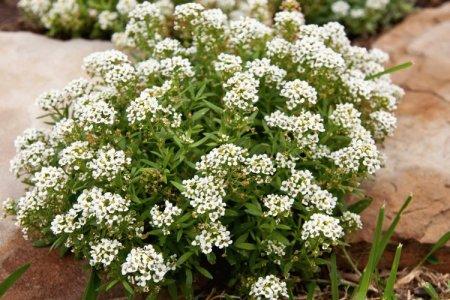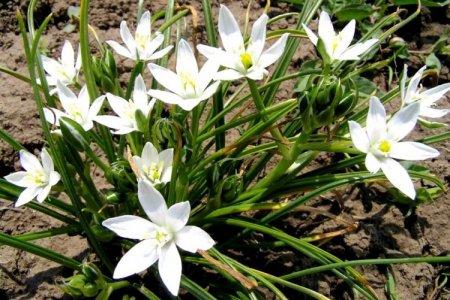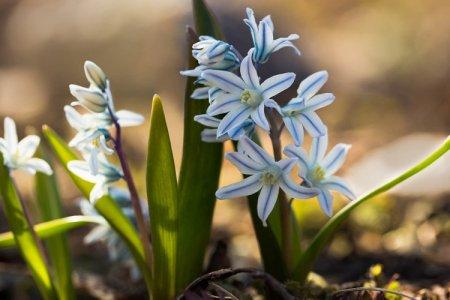
If you like bright flowers and unusual color, mimulus or lipstick is exactly what you need. In mid-latitudes, this perennial plant is grown as an annual. So it doesn't even have time to cause trouble!
general information
Mimulus is a wonderful decoration for flower beds and rock gardens. It can be grown in containers, pots, or whatever you like. Herbaceous species grow up to 70 cm, and shrub species - up to 150. Shoots are straight and creeping, but always branched.
The most interesting feature of the mimulus is its unusual shape of the buds, for which the plant was called the lipstick. The flowers are asymmetrical, up to 5 cm in diameter, with a bent, segmented lip. But the name "mimulus" is associated with mimes and the plant's ability to mimic - to change the shade.

Types of mimulus
In horticulture, only the most decorative and spectacular types of mimulus are cultivated. Each of them is good in its own way and has unique zest. It is most convenient to classify them by the shade of the flowers.
Orange mimulus
A tall, thermophilic variety up to 1 m high with dark glossy leaves. The main shades are orange and pink, and the diameter of the flowers reaches 4 cm. The tall mimulus needs support, because the shoots will begin to creep.

Speckled mimulus
An original decorative variety with red spots on top of yellow petals. He has tall and branched straight shoots that stretch up to 80 cm. There are variegated varieties.

Pomegranate mimulus
Californian and Mexican species with a complex iridescent color of buds. All shades of orange, red and burgundy are effectively intertwined in it.

Copper red mimulus
The beautiful variegated look combines all shades of yellow, red and red in one flower. This is one of the smallest mimulus, because its height is no more than 12-15 cm.

Gaping mimulus
The spectacular lavender look is also called open for the characteristic shape of the buds. There are many varieties of different sizes - from 20 cm to 1 m, and they are all very branched.

Yellow mimulus
The ancient and very popular Chilean species has spread all over the world. In culture, it is grown as an annual and is loved for its large yellow buds and serrated leaf plates.

Red mimulus
It is also called purple, and in our latitudes it grows only as an annual. These are compact bushes 40-60 cm in height with fragrant red tubular flowers.

Musky mimulus
Differs in a sharp expressive aroma and fleecy short shoots up to 30 cm Leaves - small and oval, and canary-colored flowers reach 2.5 cm in diameter.

Mimulus care
The main rule when growing mimulus is constantly wet soil. To make the plant bush faster, pinch young shoots. And don't forget about frequent regular watering!
Temperature and lighting
Mimulus is a thermophilic plant, but some varieties can withstand up to -20 degrees. Since spring, he needs a bright light, or in extreme cases, partial shade. In partial shade, control humidity especially carefully.

Watering
Mimulus does not tolerate dryness and will not grow on overdried soil. The soil should always be slightly damp, so the plant needs frequent watering, especially in summer. But watch the situation, because this love of water has a downside - with constant waterlogging, fungus develops.

The soil
In order for the lipstick to please with its beauty, a slightly acidic soil is needed, so the alkaline soil should be acidified in advance. If possible, choose humus loams, and be sure to add peat.

Fertilizers and feeding
Frequent feeding of mimulus is not needed, just as any specific fertilizers are not needed. Use complex mixtures for flowering plants once a month as recommended by the manufacturer.

Pruning
Mimulus can bloom twice a season, but then after the first wave you need to cut off all the shoots. Soon new ones will grow, and now they will bloom in the second circle.

Wintering
Perennial species of mimulus can be sent to the room for the winter. To do this, cut shortly and transplant the bush into a flowerpot before the first frosts and leave it in a cool place, and in the spring, plant it again in the garden.

Planting and reproduction of mimulus
In order for the mimulus to bloom exactly in time, it is germinated with seedlings from the end of March. Spread small seeds over the surface of loose soil with sand, perlite and other impurities. Spray, cover with foil and leave in a bright place at 16 degrees. The first shoots will appear in just a couple of days.
As it germinates, lower the temperature to 12 degrees and add more light. When mimulus has 4 leaves, dive several seedlings into different cups. After that, after a week, you can already feed him a little.
In May, gradually harden the seedlings outdoors, increasing the time. In the second half of the month, transplant the mimulus into the garden together with an earthen lump with a step of 20-30 cm. In the southern regions, seeds can be sown directly into the ground at a time when the temperature stably rises to at least 15 degrees.

Pest and disease control
Due to improper care, Mimulus suffers from fungal diseases - powdery mildew, black leg and gray rot. Inspect the garden regularly, remove diseased plants, and use fungicides as needed.
Also, mimulus leaves attract slugs, but with a small amount, it is easier and faster to collect them by hand. Treatment with a banal soap solution saves from the invasion of aphids. But with the advent of the rapidly multiplying whitefly, we advise you to immediately use chemicals.

Mimulus - photo
The variety of colors of the mimulus is simply impressive. See how many spectacular and interesting varieties you have at your disposal!



























